As the great Irish poet and playwright, Oscar Wilde once said, “I am so clever that sometimes I don’t understand a single word of what I am saying.”
Intelligence or data is the beating heart of Marketing.
Our campaigns thrive or fail because of good or bad intelligence.
Everything that comes afterward - think value proposition, messaging, the campaign itself, etc. is informed by the intelligence, i.e. the data that is collated at the beginning of any strategy (and the data that is collated as the campaign is ‘in-situ’).
This is particularly true with Account-based Marketing.
And how’s the Oscar Wilde quote relevant for B2B Marketers and, in particular, ABMers?
I think a lot of us Marketers are guilty of being too clever and either relying blindly on data, not doing enough due diligence of the data, or conversely, not getting the most out of the data.
We’re making ourselves look clever with the use of data without really knowing what it is telling us or, worse, being misled by the data.
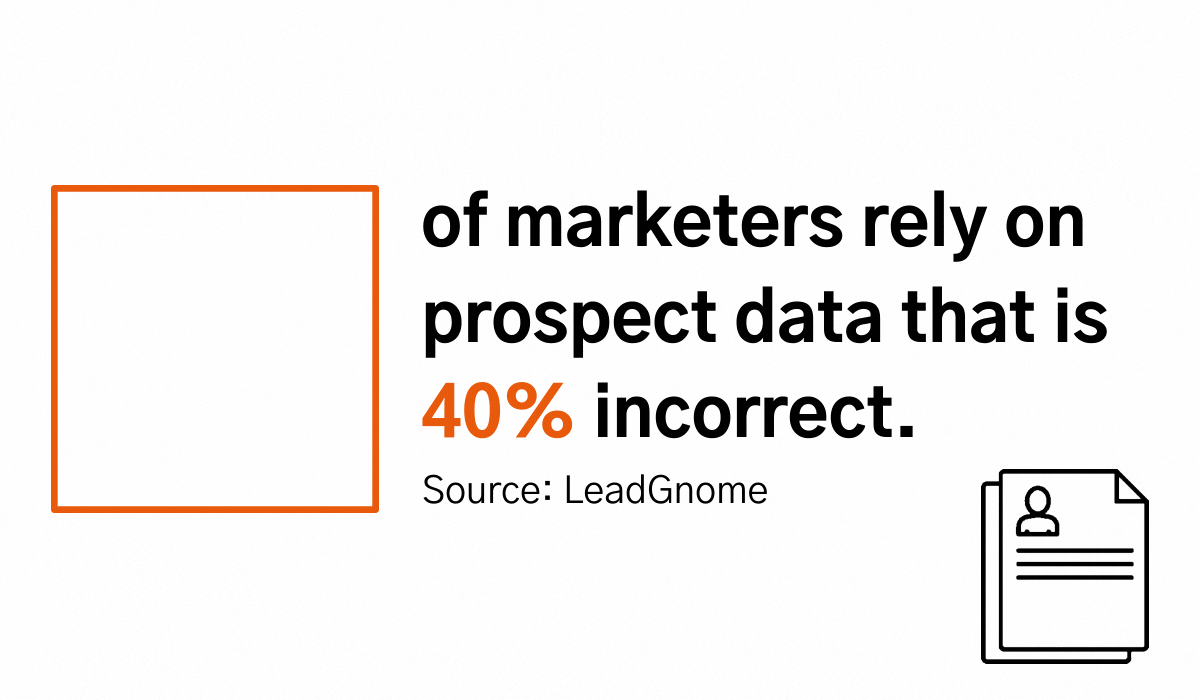 There are lies, damn lies, and data...as 62% of marketers rely on prospect data that is 40% incorrect.
There are lies, damn lies, and data...as 62% of marketers rely on prospect data that is 40% incorrect.
So let’s take a look at Account-based Intelligence (ABI) and explore:
- What Account-based Intelligence is, and how it can support your ABM strategy
- Examples of ABI technologies to support ABM
- How ABI can assist your ABM program throughout the entire buying journey
Defining Account-based Intelligence
Account-based X…
Account-based Marketing
Account-based Sales
Account-based Engagement
Account-based Experience
Let’s admit it.
Account-based terms are receiving a lot of buzz in the B2B Marketing and Sales world.
But what is Account-based Intelligence (ABI) and how does it differ from Account-based Marketing (ABM)?
ABM, as you know, is all about ‘flipping’ the traditional marketing funnel. You start with the accounts you want to win (or grow) and run campaigns into these accounts in order to build relationships, strengthen your reputation and, ultimately, deliver revenue.
Now, that’s a very simplified definition of ABM. Looking for more? Check out this other insight we’ve drafted on the subject.
But how does ABI fit in?
It’s best to think of ABI as one of the essential ingredients that support your ABM strategy.
Simply stated, Account-based Intelligence is the insight, data and context that gives you the crucial information you need to deliver your ABM strategy.
- ABI helps you to integrate data from all your MarTech
- ABI helps you to make sense of this data - to put it into context
- ABI helps you to use this data to improve the effectiveness of your ABM strategy
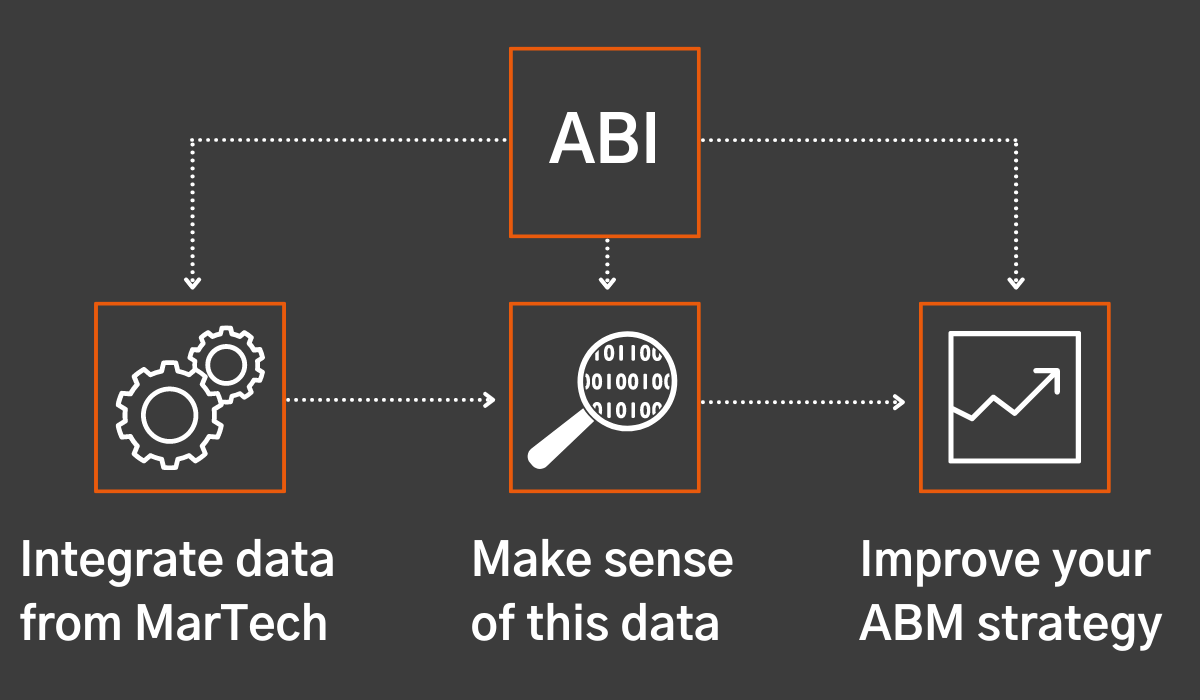
How can you use Account-Based Intelligence tech for ABM success?
So, ABI pulls together all the data from the various tech platforms you have at your disposal.
ABI gives you the context to use this data correctly and by who (e.g. Sales and/or Marketing).
ABI informs your campaign - at all stages, from ICP to Account Selection to Value Prop, etc.
Traditionally, many B2B Sales and Marketing teams have had visibility on accounts/contacts/leads, etc. but haven't had clarity on which ones have the highest likelihood of purchasing - or even which ones are relevant to their organization.
And even when you switch to an ABM approach, you’ll likely encounter similar challenges - if you haven’t got the right “intelligence” in place.
Indeed, the top three challenges of implementing ABM are creating a scalable strategy for multiple accounts, producing customized content, and coordinating programs across Marketing, Sales Development, and Sales teams (TOPO).
So how does Account-based Intelligence solve these challenges?
Data showing the account’s activity in the market, propensity to buy, and engagement with your brand in real-time, surfaces better opportunities to build relationships with key accounts - and ultimately drive revenue.
However, the ABI landscape isn’t always easy to navigate. In fact, just 16% of marketers are confident they have a good understanding of the technology available for ABM.
Let’s find out how the right Account-Based Intelligence improves your ABM strategy and execution.
1. It's all about data hygiene
57% of UK Sales professionals say sales technology is important to closing deals; 38% say it is very important.
Not only can ABI tech help expedite your campaigns, it can also help make them more accurate - and prevent you from wasting valuable time and resources.
Consider how you can enhance your first-party data (integrating the right ABI tech with your CRM, where possible).
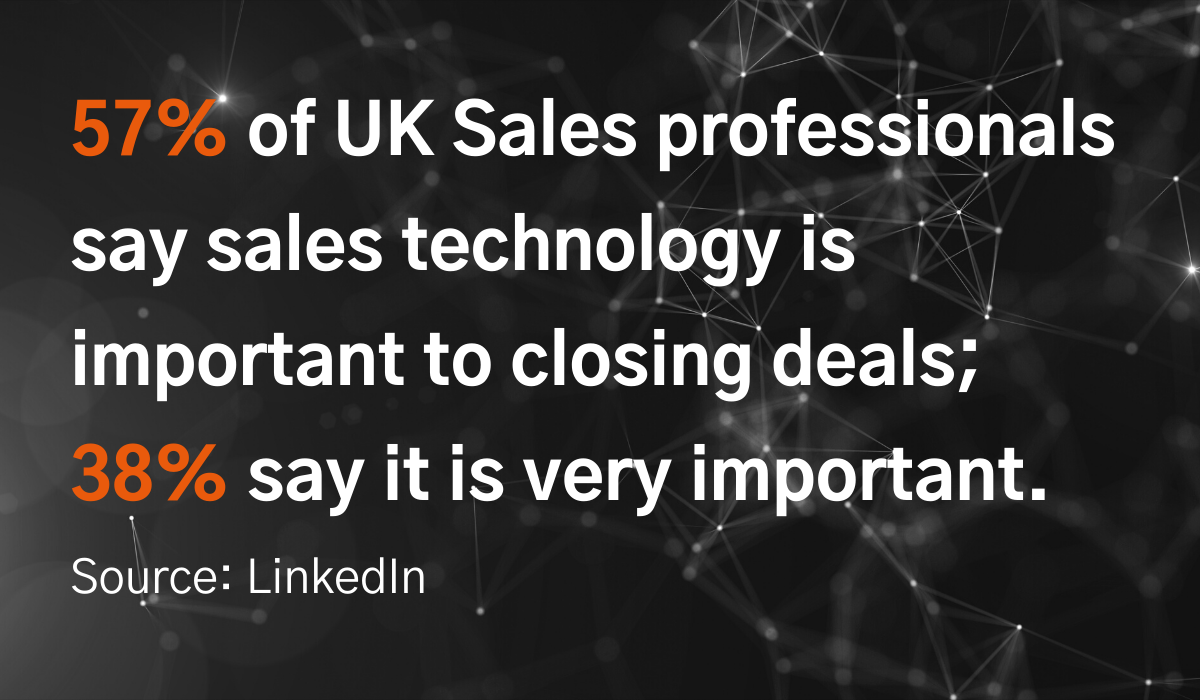
Platforms like ZoomInfo, Cognism, and LeadGnome can help you recognize out-of-date customer information (such as if a contact has changed job, left the company, or has new contact info), and update it.
At the very early stages of your ABM strategy, first-party data should be reviewed - and often paired with third-party data - as you go through your account selection process.
Here are some of our favorite tools to help you build a more comprehensive picture of how your prospects are engaging with your brand:
- Salesforce is a popular Sales tool and can help take your sales enablement initiative to the next level
- LeadFeeder provides insights into which organizations are visiting your website and what pages they view
- HubSpot social tools - connect up your company social accounts to see who is engaging with your organic posts
- ZoomInfo enables you to cross-reference current data on 100M+ companies and 130M+ contacts
2. What are target accounts researching?
Intent data is a very popular form of Account-based Intelligence.
And for good reason.
You’re not likely to have in-depth, first-party data on all accounts that are of interest to your business - and even if you do, it’s best practice to validate your assumptions with third-party data.
“Intent data allows you to really hone in on, with laser precision and zero waste, the opportunities that are most likely to convert.” - Jon Clarke, Founder at Cyance
Consider whether an account is actively searching around the top, middle, and bottom-of-funnel key terms as this will indicate their propensity to buy.
Equally, is the account researching your competitors? This can be valuable when working on any RFPs/tenders.
And you might be wondering, how should I best leverage this data?
Use it to inform your campaign messaging strategy.
Your campaigns should be tailored to the topics, challenges or interests trending for the account.
Be sure to look at how accounts are trending over time to see if there’s been a shift in their priorities and focus - so that you can time your outreach across multiple channels.
Intent data providers such as Cyance often integrate with programmatic ad platforms so you can serve targeted ads to the specific devices consuming relevant content.
3. Know your buying unit
Did you know that the typical buying group for a complex B2B solution involves 6 to 10 decision-makers?
Whatever data source you choose, insights into the buying unit is an essential step to your ABM program; include decision-makers and influencers in your research.
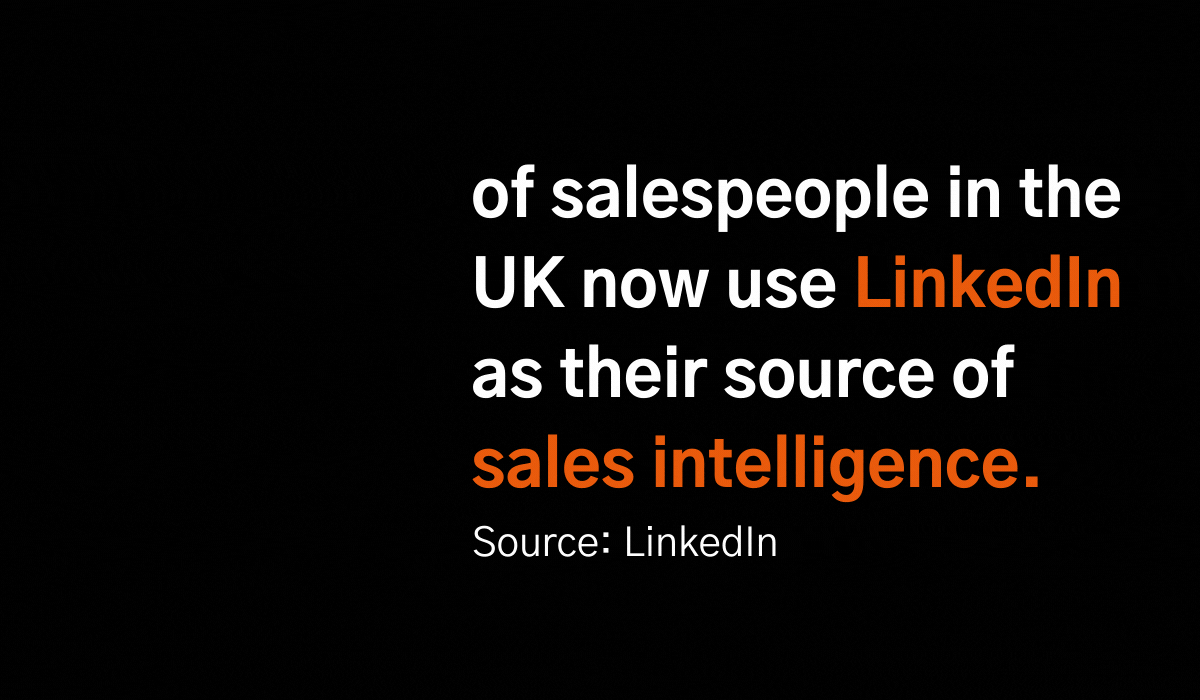
LinkedIn Sales Navigator is a powerful tool to help you identify key contacts, conduct light research into their interests or challenges based on their social activity, and you can easily reach out by sending a connection request or InMail.
Two thirds of salespeople (63%) in the UK now use LinkedIn as their source of Sales intelligence, which is over 50% more than any other platform or tool.
Once you’ve built out a detailed overview of the buyer’s unit, this information should be used to personalize your outreach - CMOs and CTOs have very different challenges and priorities, so get creative!
Sharing a content asset with a prospect via Sales Navigator? Use the built-in SmartLinks tool so you can see who views the asset, for how long, and if they download it.
4. It's all about the personalization
ABM is all about putting the buyer front and center.
But... the data shows that Marketing and Sales teams are still struggling to deliver a personalized, buyer-centric strategy.
48% of UK sellers say they always put the buyer first. But only 12% of buyers agree.
There’s a whole host of new Account-Based Intelligence tools to help Marketing and Sales teams deliver personalized, creative, and even “truly-outside-of-the-box” experiences.
From awareness, through to education, influence and commit stages, it’s important to understand how each touchpoint resonates with your prospects - and iterate on this.

Interactive content tools such as Turtl enable you to produce captivating, personalized content at scale - and track engagements from each contact (and account) within your CRM.
So how does this intelligence benefit you?
Knowing how prospects are engaging with your content helps you become hyper-personalized in your outreach so each touchpoint is informed by the data. This will improve the relationships you build with prospects, and ultimately drive better ROI.
Remember that a buyer-first approach should be measured in problems solved, not just products sold!
5. Don't forget the measurement
ABM is not a static approach.
To truly see success with ABM, you need to think about measurement, collaboration and evolution.
An Account-based strategy relies on a healthy alignment between Marketing and Sales, and constant strategic communication, leveraging relevant insights from your ABI tools to make changes to your strategy where necessary.
“You will waste an awful lot of money on an ABM program if you are just doing it on the Marketing side.” - Riaz Kanani, CEO at radiateb2b
So, how can you make sure your efforts aren’t wasted?
We recommend using dynamic ABI tools that update regularly - helping you get the right contextual information at the right time.
For example, if you’re running a One-to-few and One-to-many program concurrently, promote and demote accounts between the two programs based on the most recent first-party and intent data insights.
Schedule weekly catch-ups for Marketing and Sales to review ABM data, and use instant messaging tools such as Slack to enable fast follow-up with prospects - keeping all parties in the loop.
Consider the ‘3Rs’ when reporting on your ABM program.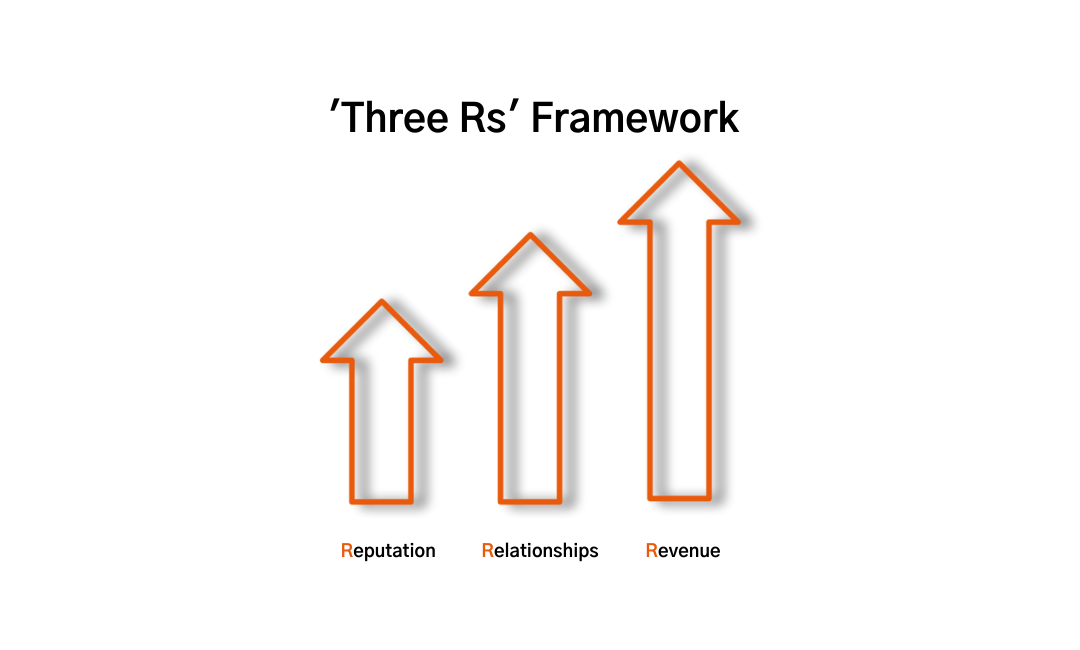
It’s mostly - but not solely - about ROI.
Remember that ABM isn’t just about revenue, but also improved relationships and reputation within your target accounts.
We’ve written a lot about this - it's worth checking out this Insight on ABM metrics.
Companies that implement ABM have reported an 84% improvement in reputation and 74% improvement in customer relationships.
Tailor your KPIs around your business objectives, making sure to agree on these across the organization, and report on a weekly, monthly, and quarterly basis.
Finally, don’t forget to act on the data!
Make tweaks, changes, or even broader pivots to improve your ABM program.
Account-based Intelligence: The building blocks of your ABM strategy
As you can see, ABI is the filling to your ABM sandwich - without it, you won’t have the “intelligence” to deliver a successful ABM strategy.
Use the right ABI tools to avoid launching an ABM strategy based on guesswork!
Here’s a summary of just some of the things that ABI tools can help you to achieve:
- Discover the right accounts based on your ICP
- Promote and demote accounts into your ABM campaign
- Build out information on the relevant people/buying unit within accounts
- Identify when prospects are “actively in-market” for your product or service
- Use prospect research and engagement data to start sales conversations
- Give Sales teams insights into how they can best personalize their message to make it land with impact
- Review your ABM results and revise your strategy
- And much more!
The right technology mix will be dependent on your existing tech stack - so look for platforms that integrate where possible to help you build a holistic picture.
If you’re interested in learning more about ABM, take a look at our Let’s Talk ABM series to get insights from industry leaders!







